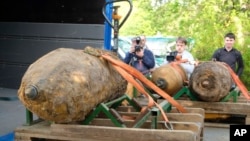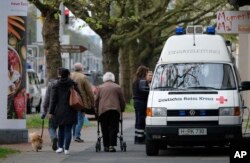More than 50,000 residents of the northern German city of Hannover have been asked to leave their homes, as authorities prepare to mount a large-scale operation to defuse World War II-era bombs.
City officials say two bombs were found at a construction site and three more nearby.
The city prepared a series of events for the evacuees, including free museum visits and discounted film screenings.
More than 70 years after the end of the war, unexploded bombs are regularly found buried on German land, legacies of the intense bombing campaigns by Allied forces against Nazi Germany.
German broadcaster Deutsche Welle newspaper noted that on October 9, 1943, alone, some 261,000 bombs were dropped on the city, and many of them remain unexploded. Authorities worry the bombs are getting more dangerous with the passage of time as the material disintegrates.
The biggest such evacuation took place last Christmas, when an unexploded British bomb forced 54,000 people out of their homes in the southern city of Augsburg.









